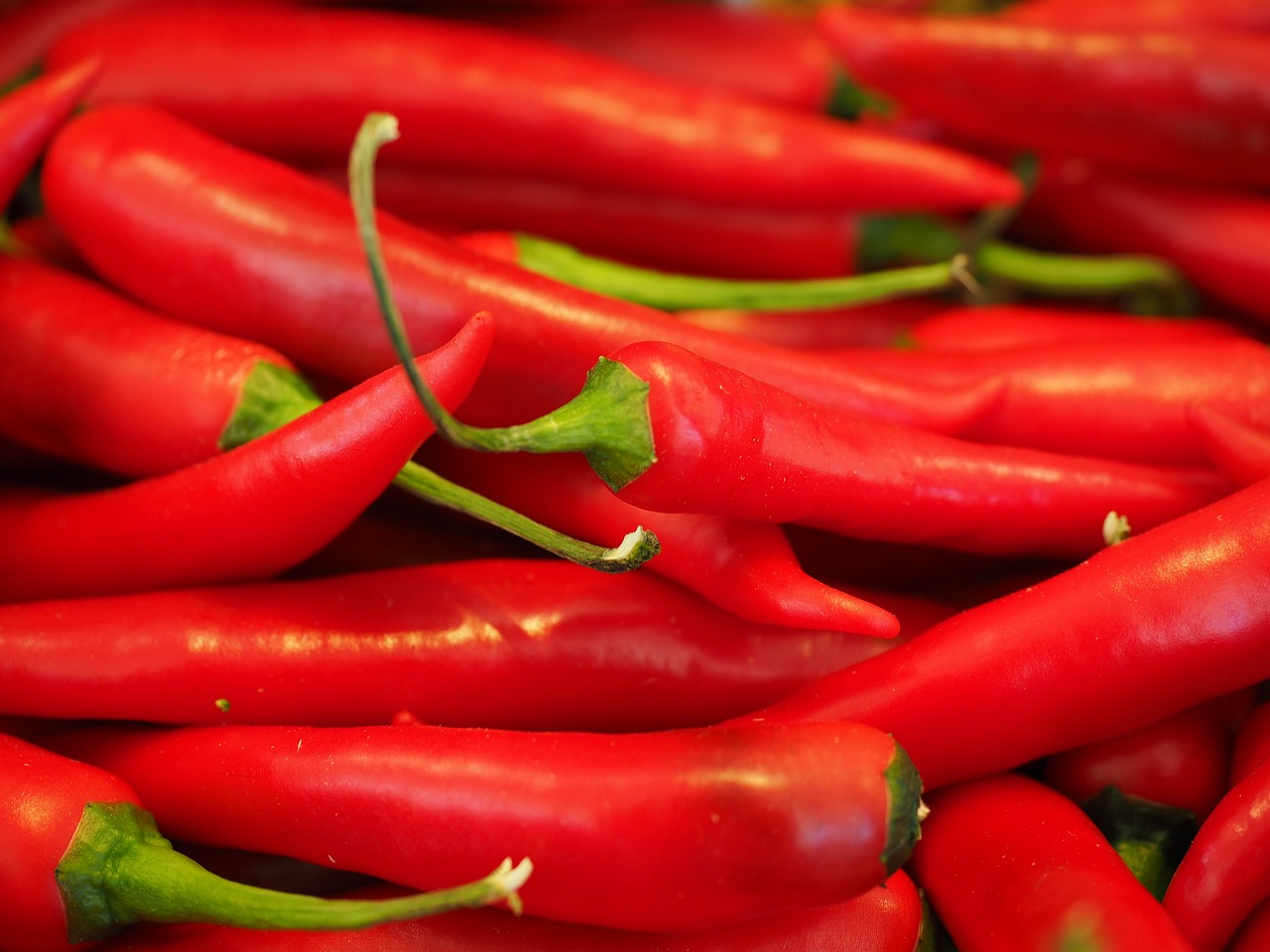You should avoid eating extremely spicy foods if you have a sensitive stomach.
Chili, pepper, ginger, & co. Many people like spicy food and season their meals with fiery spices. Are they doing their health a favor?
Spiciness is not only supposed to give food that certain something but also to improve health. But not everyone benefits from spiciness. The health benefits of spicy food, when it’s too spicy, and who should avoid it.
What makes our food spicy?
The spiciness comes from various spices and their ingredients. Capsaicin in chili, for example, provides fire on the tongue, while pepper contains piperine. Horseradish and mustard contain mustard oils, ginger contains the pungent substance gingerol, and garlic and onions have plenty of allicin to give them a zesty taste. What is exciting is that spiciness does not taste like sweet, salty, bitter, sour, or umami. Spicy food stimulates the heat and pain stimuli in the mouth and is a pain reaction. At the same time, spicy food stimulates blood circulation. The spicier we eat, the more painful we feel, the redder our skin becomes, and the more we sweat.
“If you are not used to spiciness and eat too much of it, it can even lead to spicy shock and circulatory collapse—and then be life-threatening. This shows that eating spicy food in moderation is a pleasure, but too much can put a strain on the body. Anyone who eats spicy food should therefore always consider their individual spiciness limit and approach it slowly,” advises ecotrophologist Brigitte Neumann from Uttenreuth.
Pungency can be measured
Pungency is determined using the Scoville Heat Unit (SHU). The lowest human perception threshold for spiciness is around 16 SHU. Sweet peppers have up to ten SHU; commercially available chili peppers are between 100 and 500 SHU. Tabasco sauce is classified at 2,5500 to 8,500 SHU. The “Carolina Reaper” variety, considered the hottest chili in the world, is 2,200,000 SHU. Incidentally, a commercially available pepper spray has a heat level of 2,000,000.
How much heat is healthy?
In a statement on “foods with a very high capsaicin content,” the Federal Institute for Risk Assessment (BfR) assumes that the maximum level of spiciness traditionally accepted by adults at a meal is five milligrams per kilogram of body weight. This would correspond to an intake of 300 milligrams of capsaicin by an adult weighing 60 kilograms over one meal.
“If you’re not used to spiciness, it’s best to go for the gentler spices. Horseradish, for example, is hot, but the heat doesn’t stay in your mouth for too long. The pungency of pepper also subsides after a few moments. Even people who otherwise don’t like spicy food often like mustard oils,” explains Neumann. “It’s different with chilies and chili preparations. They burn intensely in the mouth and trigger a pain sensation similar to a burn. The pain lingers for a relatively long time, leaving some people gasping for air.”
How spicy food affects the body
If you don’t overdo it with the spiciness and only add as much spice as you like, you can benefit from various positive effects on your health. The different spices can be as hot as their positive effects. For example, piperine in pepper promotes salivation, aids digestion, and has a slight antibacterial effect. Capsaicin in chili also promotes salivation, stimulates digestion, kills germs, and improves mood. Gingerols in ginger have a digestive effect and can be helpful against nausea, which is why they are often used to treat travel sickness. Spicy food can have the following health-promoting effects:
Spicy food stimulates salivation and the flow of gastric juice, which aids fat digestion.
Spicy food activates the intestine’s own motor function.
Spicy food fights bacteria, viruses, fungi, and other germs, supporting the body’s defences.
Spicy food preserves food, which delays spoilage. People eat a lot of spicy food, especially in warm countries, as spiciness inhibits the formation of microorganisms.
The vasodilating effect of spicy food improves blood flow to the mucous membranes, which is also good for the immune system.
In the case of a cold or flu-like infection, spiciness, consumed in the form of ginger tea, for example, has an anti-inflammatory, nasal secretion-forming, and expectorant effect and can even help to open a blocked nose.
Spiciness stimulates energy metabolism, which can burn more calories and produce hot flushes. In addition, you generally eat less spicy food, which can also positively affect your calorie balance.
In response to the pain stimulus, spiciness can stimulate the body’s release of endorphins and thus have a mood-enhancing effect.
Spicy food is also eaten in warm countries to promote body cooling through increased perspiration.
The pain-relieving and anti-inflammatory effects of chilli and mustard seeds are also used in heat patches, often used to treat joint pain.
“Only eat so much or so little spicy food that it is and remains digestible and tasty. The limit is different for everyone. Some people get stomach irritation from even small amounts of chili, while others find the larger spiciness good for them. It’s a matter of trial and error,” says Neumann. “If it was too much, capsaicin is fat-soluble. A few sips of milk or bread with butter or olive oil will quickly alleviate the symptoms.”
Anyone who reacts to spicy food with stomach pain, heartburn, mucous membrane irritation, nausea, vomiting, diarrhea or other gastrointestinal complaints, or even has problems with their blood pressure, should significantly reduce the amount or avoid it altogether. People with irritable stomach, kidney, or urinary bladder diseases should also be careful with spicy foods. Small children should not eat spicy food either. Their digestive system is not yet prepared for spicy food.
This post has already been read 4153 times!



